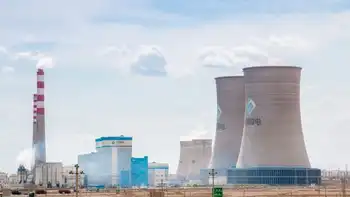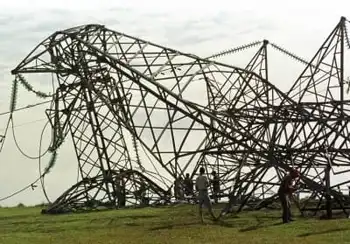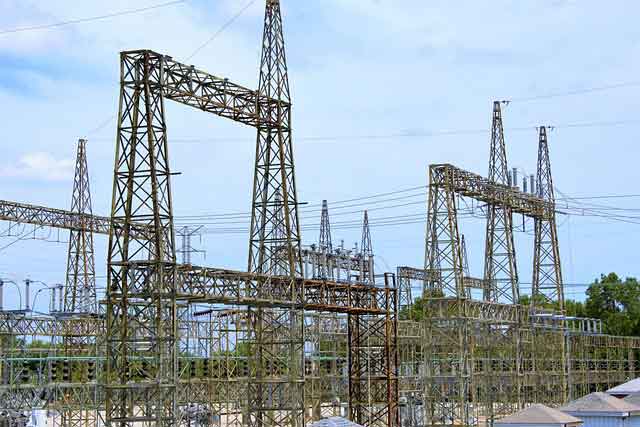No future for wind in Ontario
By Toronto Star
CSA Z462 Arc Flash Training - Electrical Safety Essentials
Our customized live online or in‑person group training can be delivered to your staff at your location.

- Live Online
- 6 hours Instructor-led
- Group Training Available
But since most of this new renewable energy will be from wind, it may not be the smartest move for Ontario because its large hydro and nuclear capacity is not compatible with wind generation.
Wind requires natural gas-fired generation for support and natural gas will be a most precarious fuel for Ontario.
The future of industrial wind power in Ontario is tied to natural gas-fired electricity generation and that, as will be seen, is unsustainable. The Ontario power grid needs flexible support to keep supply and demand in balance, and providing this support will be made more difficult when we add the vagaries of wind.
Although nuclear units can handle the daily and weekend changes in electricity demand, they have limited capability for the kind of frequent power-up and power-down requirements that would be needed for this support. Furthermore, hydroelectric plants may not always be available due to fluctuations in water supply and water management agreements.
Even without restrictions on nuclear and hydro, it makes little economic sense to run reliable suppliers of steady power, with high fixed costs and low operating costs, at reduced output to support the expensive, intermittent and varying output from wind farms.
So, with coal being phased out by 2014, natural gas-fired generation will have to be used to support wind. Due to the simultaneous demands of home heating and electricity generation in the winter, that may lead to gas shortages. So some of these plants may be dual fuelled with gas and oil, which is not a pleasant thought.
The Ontario government is putting too much faith in natural gas for electricity generation, as the United Kingdom did with its "dash for gas" from the North Sea in the 1990s when gas was cheap. Now the U.K. is in terrible shape with its gas running out and the threat of power shortages in the next decade.
There is no long-term future for gas-fired generation in Ontario because of greenhouse gas emissions, air pollution, rising costs, the demands on gas for other uses (in the tar sands, the chemical industry, home heating, exports to the United States), declining reserves, the questionable security of foreign supplies or, in short, the waste of a premium non-renewable resource just to generate electricity.
Since Ontario's wind generators require natural-gas-fired generation for support, this creates an uncertain future for wind turbines and their transmission infrastructure that one day will not be compatible with a nuclear/hydro powered grid. Nor is there an environmental benefit to adding wind to a clean nuclear/hydro grid.
There is an alternative to building more natural gas-fired power plants in the Greater Toronto Area and other locations to replace the coal-fired stations. That is to increase the arbitrary limit on nuclear from the 14,000 megawatts imposed by the government. Bruce Power showed its willingness to build new nuclear power plants last October when it asked the nuclear safety regulator for a licence to prepare a site at Nanticoke, in addition to new units at the Bruce site.
The government's power plan envisages nuclear supplying 40 per cent of electricity demand by 2027. This should be raised to more than 70 per cent, with hydro supplying most of the remainder. If there is no market for nuclear-generated electricity during off-peak and overnight hours (for power exports, recharging electric cars, producing hydrogen and/or compressed air for generating clean peaking power and other uses), the plants can reduce their output to meet the demand. This means that even if practical wind energy storage were available, wind still would not be needed on a future all nuclear/hydro grid.
The demand on the grid from recharging electric cars should not be underestimated. The president and CEO of French nuclear giant Areva said that it would take an additional 6,400 megawatts of electricity if just 10 per cent of France's cars were electrically powered. That translates into about 1,700 megawatts (two Darlington-size units) for Ontario.
In France, the nuclear energy share of electricity production is about 78 per cent from its 58 reactors, with the balance divided nearly equally between hydro and fossil, and with the nuclear units able to meet daily changes in electricity demand. Sweden has a grid the same size as Ontario's but with almost all nuclear/hydro generation.
Wind has no long-term future in Ontario and will be more of a hindrance than a help to the grid's reliability. The Ontario Energy Board should take a good hard look at the government's Integrated Power System Plan, eliminate wind and promote cleaned-up coal-fired stations operating past 2014 until sufficient nuclear is online to avoid the building of anymore unsustainable gas-fired plants.
The technical, economic and environmental issues associated with wind power have not been fully explored. Let's hope the Ontario Energy Board will give them due consideration when it reconvenes so that money can be put where it will do Ontario the most long-term good.











